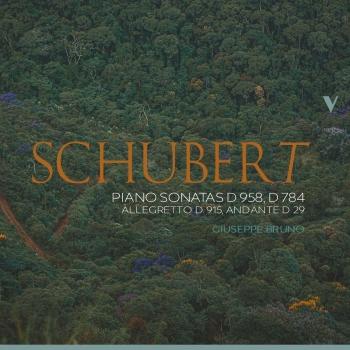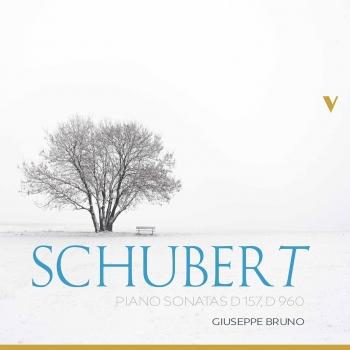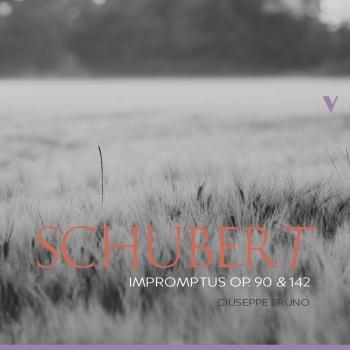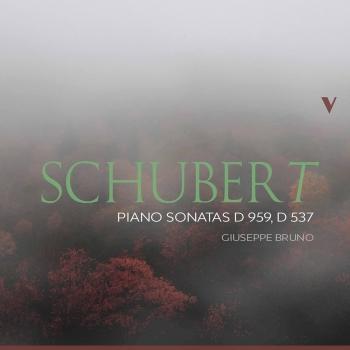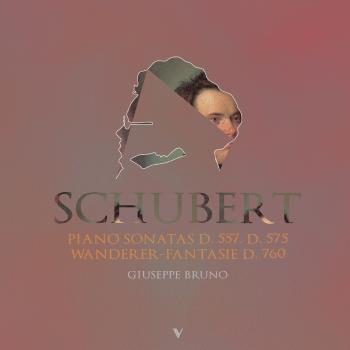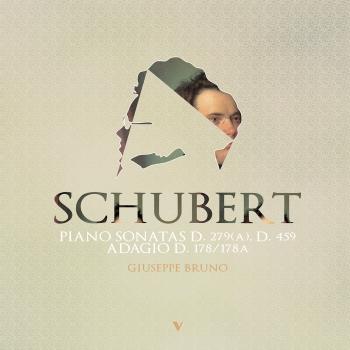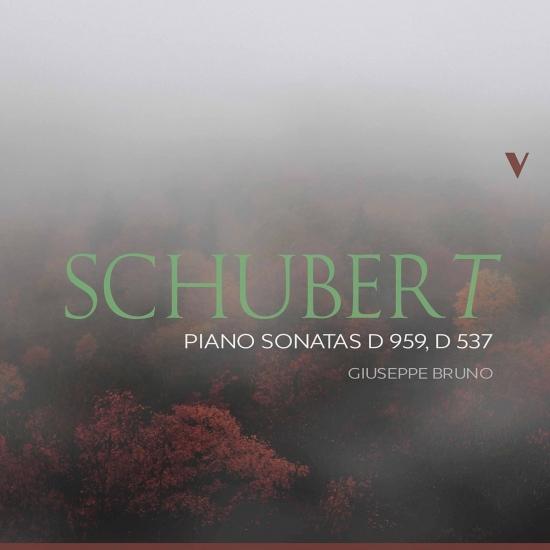
Schubert: Piano Sonatas, D. 959 & D. 537 Giuseppe Bruno
Album info
Album-Release:
2020
HRA-Release:
08.05.2020
Label: OnClassical
Genre: Classical
Subgenre: Instrumental
Artist: Giuseppe Bruno
Composer: Franz Schubert (1797 - 1828)
Album including Album cover
- Franz Schubert (1797 - 1828): Piano Sonata in A Major, D. 959:
- 1Piano Sonata in A Major, D. 959: I. Allegro16:35
- 2Piano Sonata in A Major, D. 959: II. Andantino09:06
- 3Piano Sonata in A Major, D. 959: III. Scherzo. Allegro vivace05:33
- 4Piano Sonata in A Major, D. 959: IV. Rondo. Allegretto13:11
- Piano Sonata in A Minor, Op. 164, D. 537:
- 5Piano Sonata in A Minor, Op. 164, D. 537: I. Allegro ma non troppo11:37
- 6Piano Sonata in A Minor, Op. 164, D. 537: II. Allegretto quasi andantino08:47
- 7Piano Sonata in A Minor, Op. 164, D. 537: III. Allegro vivace05:22
Info for Schubert: Piano Sonatas, D. 959 & D. 537
It is hard to fathom how Franz Schubert’s career as a composer lasted only a decade when we consider how extraordinarily prolific it was. And it is ever more astonishing that the evolution of his language would be so immense, guided by harmonic and structural explorations that would have continued well into the nineteenth-century – were it not that death untimely claimed him at age thirty-one. Penned in March 1817, when Schubert was twenty years old, the Sonata in A Minor D 537 is the first successful effort in the genre, having been written after a number of attempts either as multi-movement compositions that often lack a closing rondo, or as standalone movements in sonata or A-B-A form that are today understood as abandoned projects. The opening movement proposes an original approach to key relations, with the second theme in the key of F major and a recapitulation in the key of D minor. The second movement, “Allegretto quasi andantino,” also offers a variety of modulations and sudden changes to relatively remote keys. The closing rondo is characterized by frequent interruptions that we could interpret programmatically as a series of unanswered questions. The sonata ends on an optimistic note, in the key of A major. The work remained unpublished until 1852.
If on the one hand the Sonata D 537 was Schubert’s first fruitful effort in the genre, the Sonata in A Major, D 959 was one of his last: completed as death was nearing, in September 1828, the work is one of three monumental sonatas for piano that are today considered the pinnacle of the composer’s genius, alongside other major works such as the Quintet in C Major, D 956 and the Mass in E-flat Major, D 950. All these works explore extended forms, producing movements of unusual lengths. The first movement (Allegro) juxtaposes a majestic opening idea to an intimate second theme that informs much of the development. The rarified coda features a rare occurrence of pedal indications in Schubert’s piano works. The second movement, an andantino in F-sharp minor casts a desolate, foreboding melody against a devastating middle section whose harsh chromaticism and sonorities must have perplexed the small audience that attended Schubert’s first performance of the sonata. A brief, delightful scherzo precedes a rondo of immense proportions. Here, Schubert recycled the theme from the slow movement of the Sonata in A Minor, D 537 (then unknown) for the opening theme. A second idea, equally melodious, hardly stands in contrast against the opening theme; the structure is highlighted by imposing sections that feature strong dynamic peaks. A coda, marked “presto,” ends the rondo in a joyful tone, with a short-lived quote from the opening of the first movement that heroically bookends the work.
With this fifth album, Giuseppe Bruno continues his exploration of Schubert’s sonatas for piano for the OnClassical label. Recorded by engineer Alessandro Simonetto at the Saletta Acustica 'Eric James', The recording was captured by four Bruel & Kjaer microphones.
Giuseppe Bruno, piano
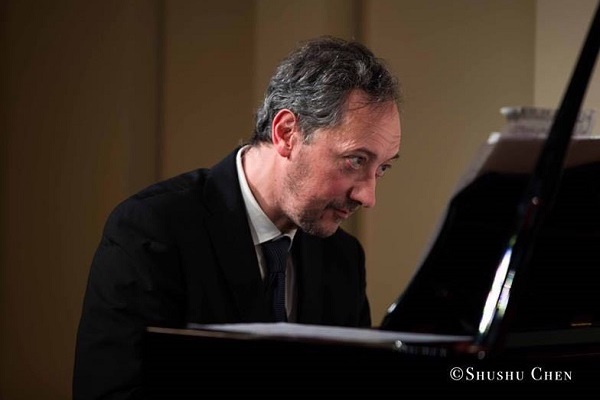
Giuseppe Bruno
graduated with honors in Piano, Composition and Conductorship with Professors Specchi, Zangelmi and Taverna. Maestro Bruno specialized in piano with Paolo Bordoni and in conductorship with Leopold Hager. He has attended a seminar in composition at the IRCAM in Paris. Performing for several years as a pianist in many different chamber ensembles as well as a brilliant soloist. He has played with many important orchestras in Italy, USA, Greece, Romania and Germany in a repertory that goes from Mozart to Dallapiccola. From 1987 to 1992 he participated in the “Due Mondi” festival in Spoleto Italy and in 1988 in the Charleston festival in the USA.
In 1991 Maestro Bruno received an award at the International Piano Contest in Rome and in 1992 he received a second award in a duo with violin player Alberto Bologni at the “Viotti” in Vercelli, Italy. He recorded for Nuova Fonit Cetra, Diapason, SAM, Bongiovanni, Ars publica, Ars Musici, as well as for RAI, Swiss French and Italian radio and for WDR in Koeln. He collaborated with directors including Alkis Baltas, Spiros Argiris, Franz Lamprecht, Corneliu Dumbraveanu, violin player Sashko Gawriloff, singers Gail Gilmore and Victor von Halem, and with the Octet of Berlin Philharmonic. He is currently a member of the “Trio Petrarca”. In the past few years he has been acknowledged as a highly regarded conductor in Italy and abroad. Maestro Bruno is at present the Director of the "Giacomo Puccini" Conservatory, in La Spezia, Italy.
This album contains no booklet.











